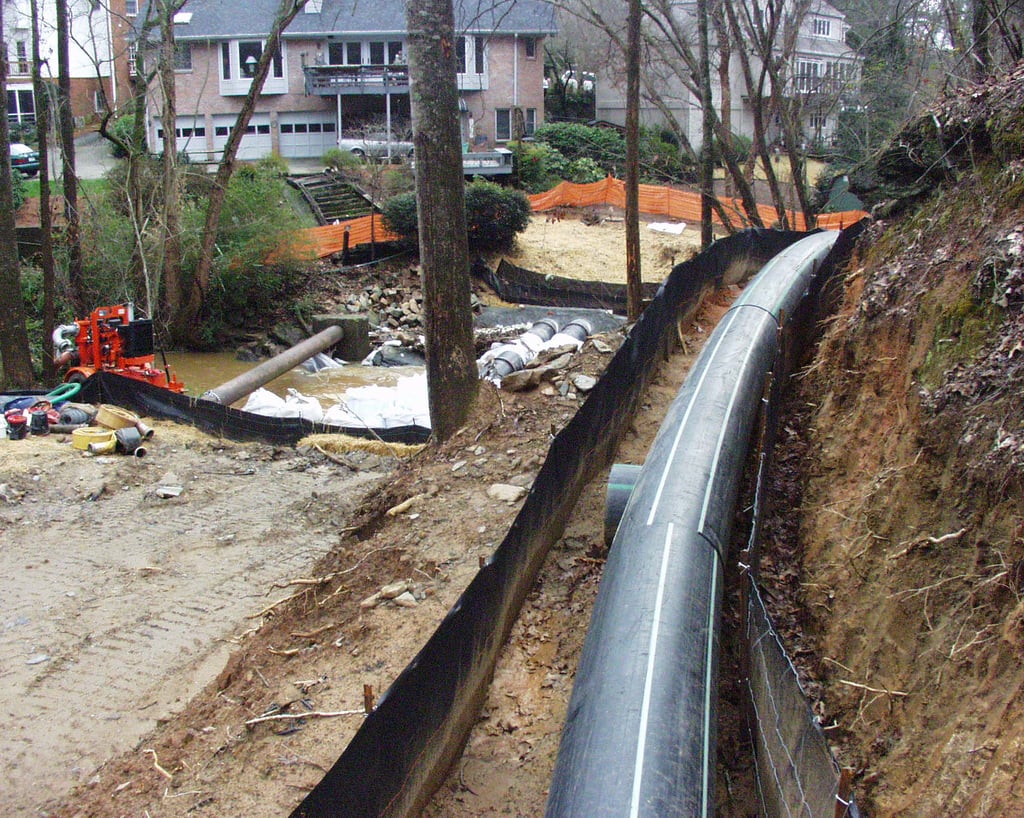Failing Sewer Lines
- Home
- Team EJP Blog
- Failing Sewer Lines
- Nov 20, 2014 8:00:00 AM
- Everett J. Prescott

Most communities have enjoyed the convenience of sewer systems and sewer lines for decades. This benefit has been due to master planning by many municipalities decades before, installing a significant amount of pipes and conduits before neighborhoods were ever built. Unfortunately, water and time can be brutal forces on any material, including metal and cement sewer pipes. As a result, many of the sewer systems that were laid in years before are starting to fail. Some will go a leak at a time. Others fail catastrophically, with sudden floods and smelly messes all over the place or even leeching up through lawns and grass areas.
Homeowners who are in homes that were built 50 or more years ago are particularly susceptible to sewer line failure. Most residential lines are made from materials and plumbing that only has a life of 20 to 30 years before leakage and cracks begin to manifest. These are caused by the corrosive power of water, plant and tree roots, blockages, earth movement, and even foundation shifts. It's often the case that when neighborhoods were first built, the ground underneath still needed time to settle, having been overturned in shaping the roads and properties. That settling can put pressure on lines buried under ground, creating slow, but powerful stress points. Between the corrosion inside and the stress on the outside, it shouldn't be much of a surprise if a pipe gets misaligned or cracks after three decades.
How to tell if a sewer line is failing?
The signs of a failing sewer line are plenty, but the more common symptoms include the following:
- Toilets that don't seem to flush despite plunging, using chemicals or clearing for any blockage inside the toilet line.
- Toilets backing up with foul-smelling water.
- Lawns that seem to be soaked even when they haven't been under any kind of watering cycle in the last day or so.
- A foul-smelling odor in the air near the house.
- Bubbles or squishy mounds in the front lawn near the street.
- Draining of water from the lawn to the sidewalk and to the street gutter.
A neighborhood sewer line is often another matter entirely. These are usually large conduits that take feed from dozens of homes and move waste to a municipal connection on a regular basis. When these lines fail, entire neighborhoods start to suffer immediately, creating a potential health hazard. Signs of failure can also include a sinking or fracturing of the surface above the pipe as the conduit begins to collapse from weight. Many of the lines are easily 40 or 50 years in age if not older. In some extreme cases they are up to 100 years old and were built with materials that were never intended to last as long as they did.
What to do if you think you have a leak?
Having an expert sewer line evaluation performed is key to finding and fixing problems before they become a local disaster and mess in terms of sewer function. With an eye for detail and good sewer line camera work, both residential and municipal sewer lines can be evaluated and have their operating health diagnosed promptly. Then homeowners and municipalities can plan repairs accordingly with the newly gained knowledge and awareness.
Don't wait for a sewer failure to occur to figure out what needs to be repaired. A sewer system diagnostic is key to keep costs down and focusing repairs where they are needed the most. A failure often causes far more damage. With proactively identified risk, the damage can be contained, keeping expenses lower as the efforts are focused better and there is less cleanup that has to be initiated in the surrounding area of the weak sewer line.
It is imperative that sewer line issues are found before they cause damage or harm. Team EJP offers sewer line air testing and Leak Locating as one of our services, and it could mean the difference between a quick fix, and a massive repair job.
Photo credit: Kid Cowboy / Foter / CC BY-SA







